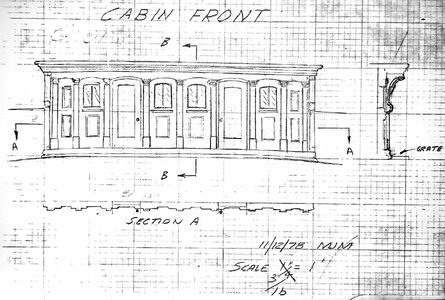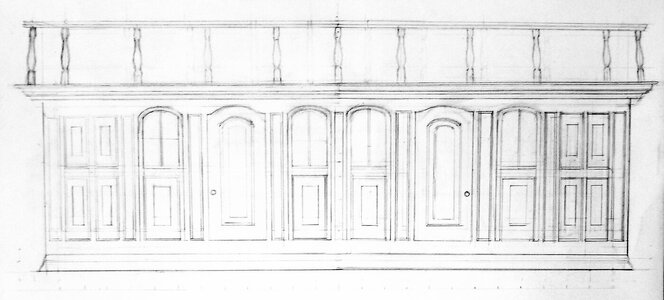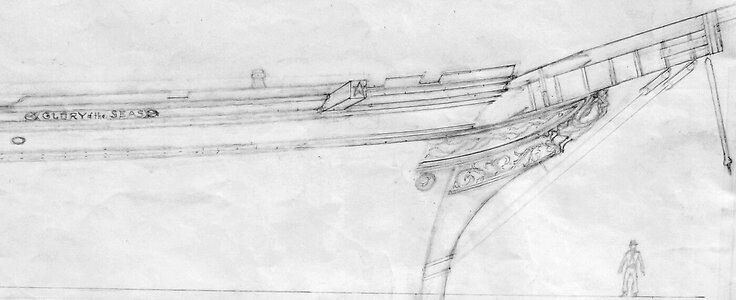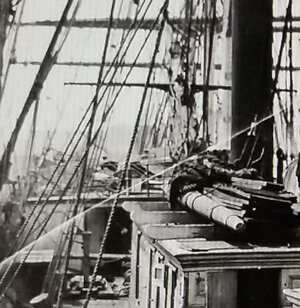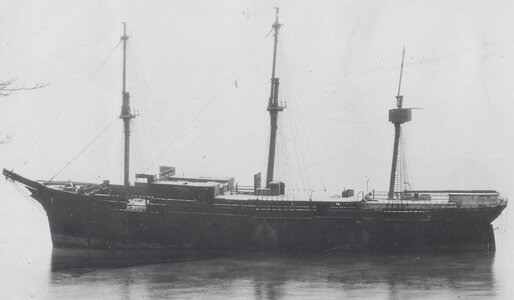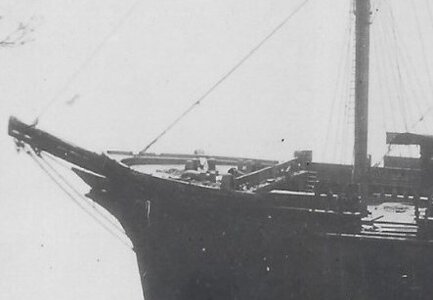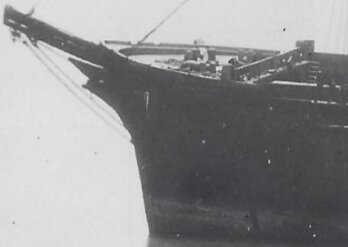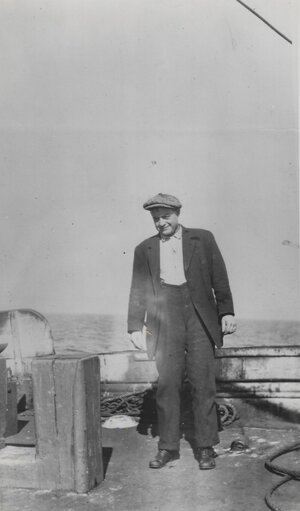- Joined
- Jun 17, 2021
- Messages
- 3,167
- Points
- 588

Progress this week. Still doing the scratch/bashing model building two-step (two forward-One back). I am including a profile which I've posted before as an example of what not to do. I looked at a number of Flying Cloud models and picked the look I liked best, which had the white upper works. Then with the actual description as quoted here by Rich (a.k.a. ClipperFan) I realize now this was somebody's fantasy, who, like me, hadn't dug deep enough into the historic record. She was all black, save for the spray rail which is portrayed as white in paintings. (Besides, I like it that way.) I tried painting the upper works black starting behind the deadeyes and realized it was a fool's errand. So white it remains. All you Flying Cloud fans out there, forewarned is forearmed, she's all black, save for the spray rail.
After some fits and starts, I decided to do the coach house facade as per the BlueJacket plans that have the virtue of being drawn to scale. Pictures of progress thus far. Windows to come and I may Gussie it up with some decorative panels as it isn't proving too difficult, even at the tiny size. I split up some Mahogany strip with a Sharp broad chisel for the doors which worked a treat.
Maybe I should make the pictures of my feet my avatar.
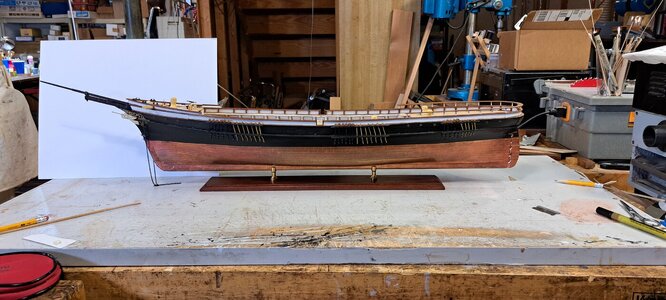
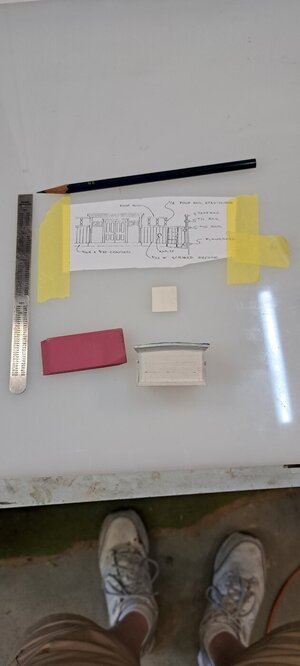
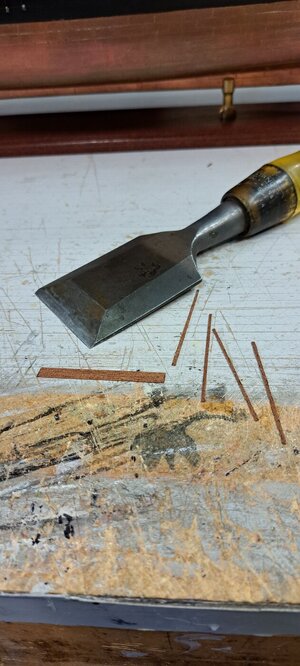
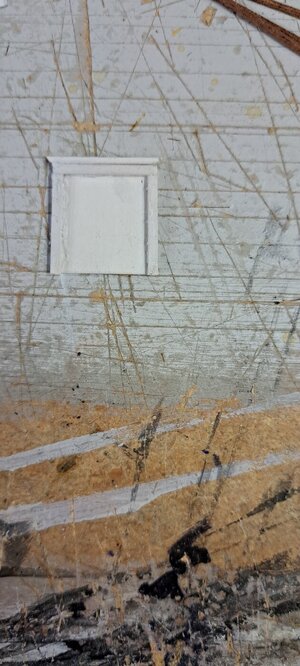
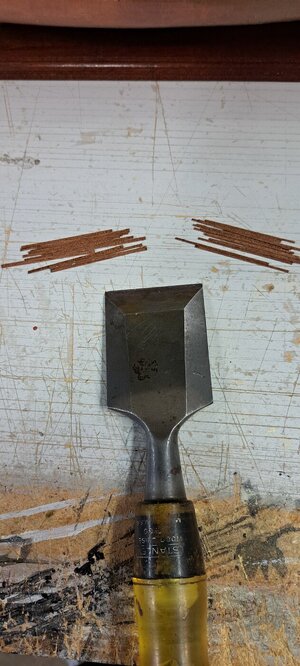
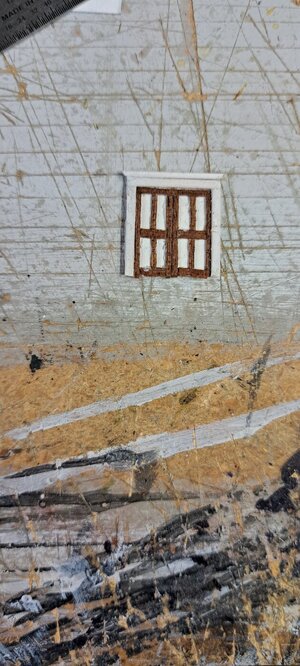
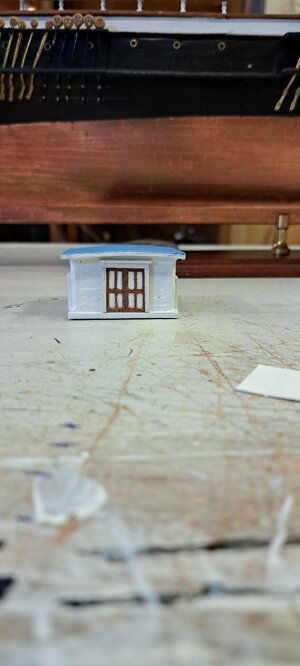
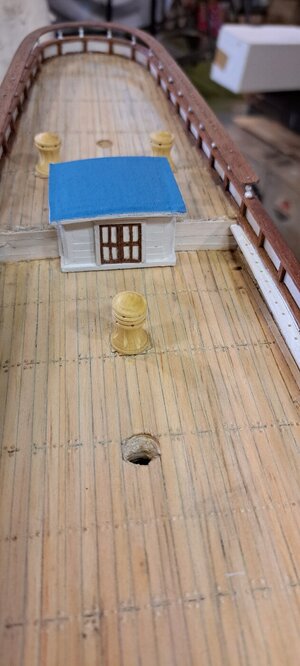
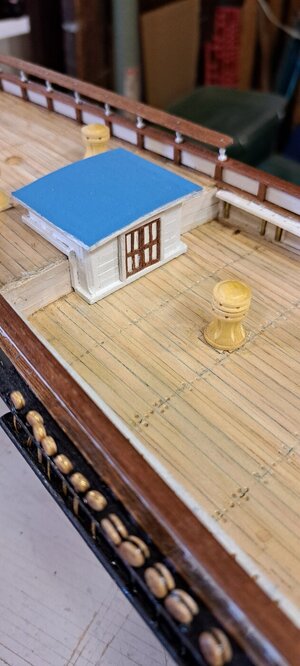
After some fits and starts, I decided to do the coach house facade as per the BlueJacket plans that have the virtue of being drawn to scale. Pictures of progress thus far. Windows to come and I may Gussie it up with some decorative panels as it isn't proving too difficult, even at the tiny size. I split up some Mahogany strip with a Sharp broad chisel for the doors which worked a treat.

Maybe I should make the pictures of my feet my avatar.









Last edited:





